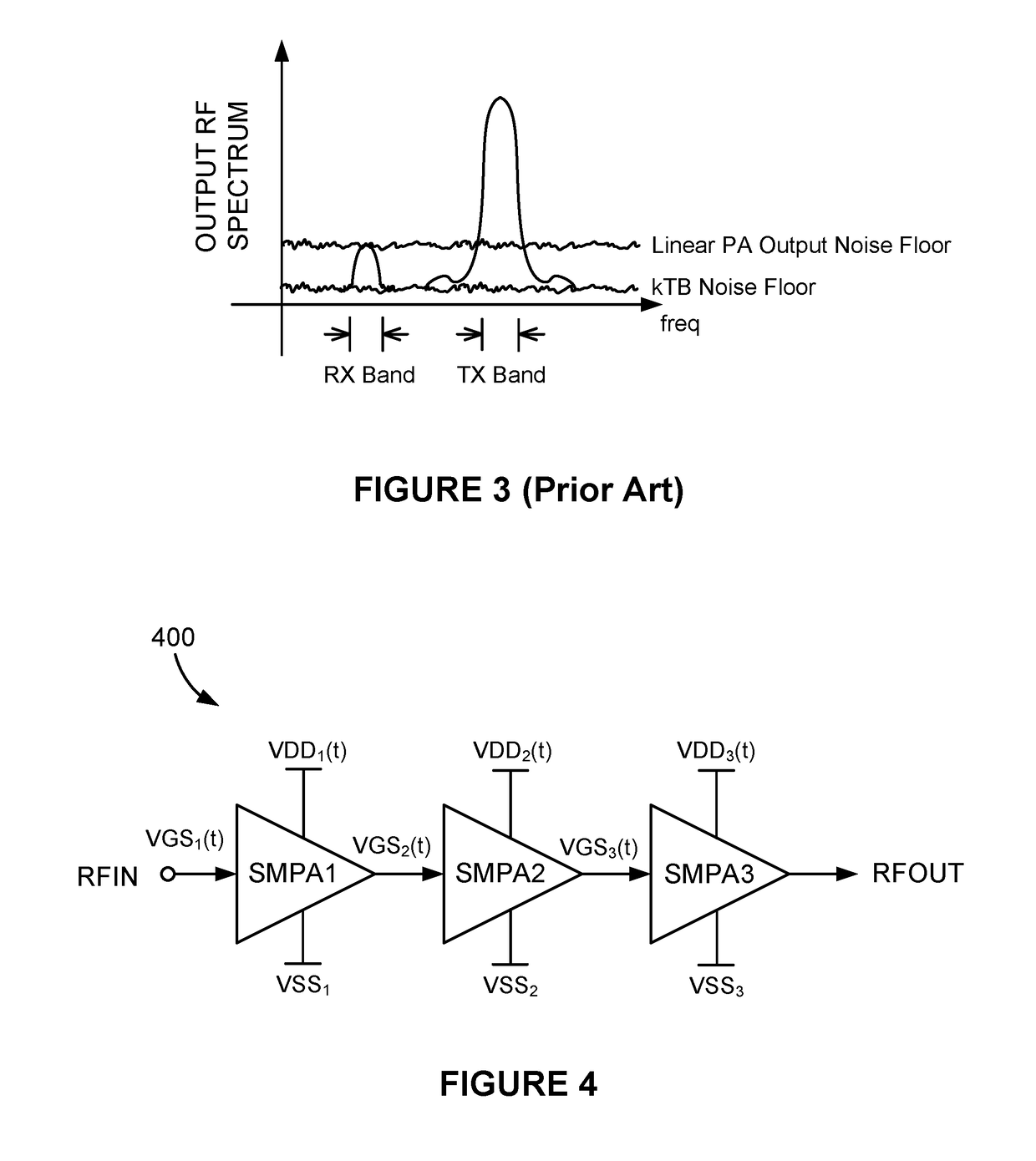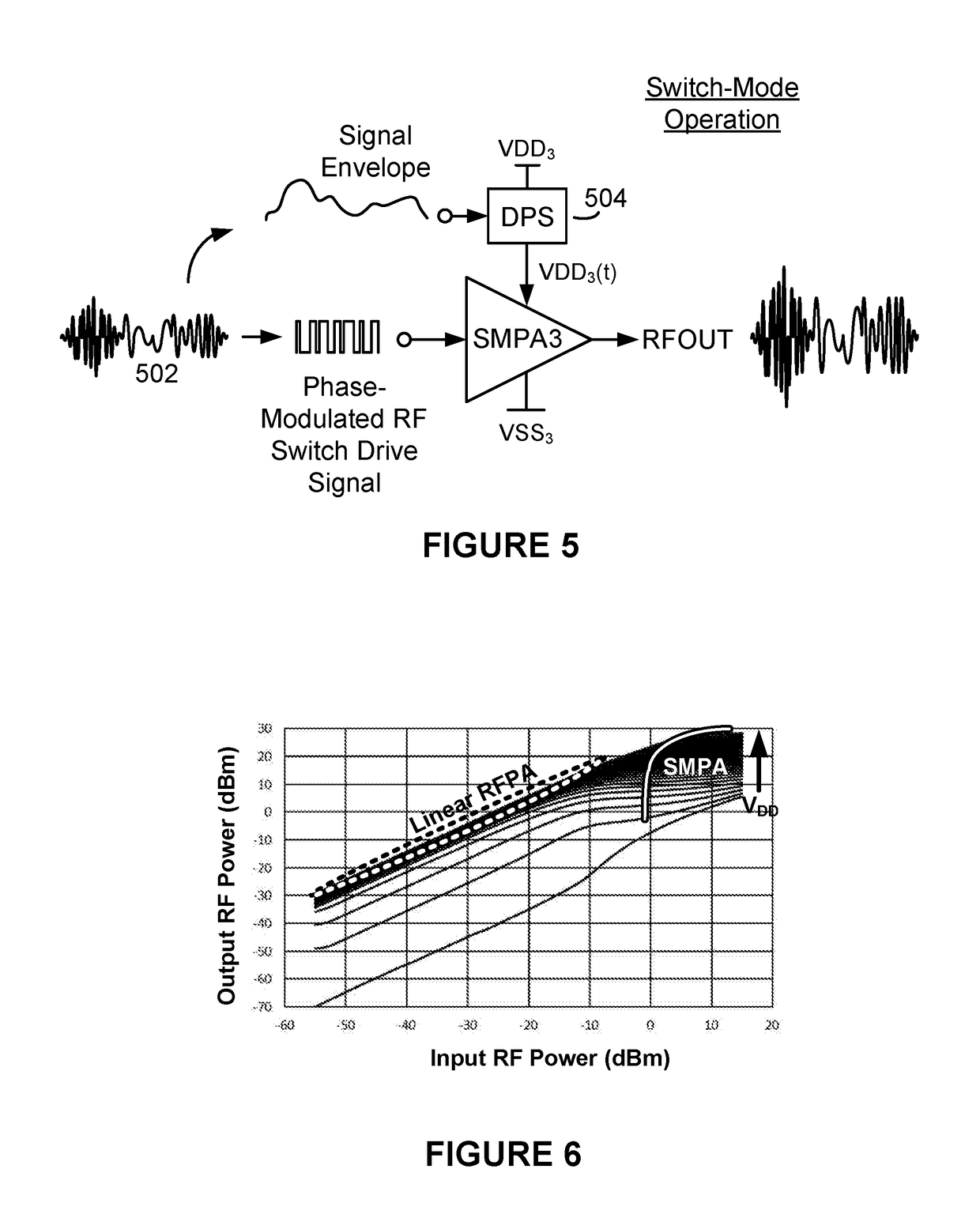Low Wideband Noise Multi-Stage Switch-Mode Power Amplifier
- Summary
- Abstract
- Description
- Claims
- Application Information
AI Technical Summary
Benefits of technology
Problems solved by technology
Method used
Image
Examples
Embodiment Construction
[0029]Referring to FIG. 4, there is shown a multi-stage radio frequency power amplifier (RFPA) 400, according to one embodiment of the present invention. The multi-stage RFPA 400 comprises a plurality of switch-mode power amplifiers (SMPAs), three in this exemplary embodiment labeled SMPA1, SMPA2 and SMPA3. As their names suggest, each of the SMPAs: SMPA1, SMPA2 and SMPA3 is configured to operate as a switch, unlike the linear PAs: PA-1, PA-2, . . . ,PA-N of the multi-stage RFPA 100 described above in reference to FIG. 1 which operate as controlled current sources (i.e., “linear” PAs). Further, each of the SMPAs: SMPA1, SMPA2 and SMPA3 is configured to operate in the polar domain, in response to amplitude-modulated power supply voltages VDD1(t), VDD2(t), and VDD3(t) applied to their respective power supply ports and square waveform angle-modulated switch drive signals VGS1(t), VGS2(t), and VGS3(t) applied to their RF input ports. In the description that follows, it is assumed that b...
PUM
 Login to View More
Login to View More Abstract
Description
Claims
Application Information
 Login to View More
Login to View More - R&D
- Intellectual Property
- Life Sciences
- Materials
- Tech Scout
- Unparalleled Data Quality
- Higher Quality Content
- 60% Fewer Hallucinations
Browse by: Latest US Patents, China's latest patents, Technical Efficacy Thesaurus, Application Domain, Technology Topic, Popular Technical Reports.
© 2025 PatSnap. All rights reserved.Legal|Privacy policy|Modern Slavery Act Transparency Statement|Sitemap|About US| Contact US: help@patsnap.com



